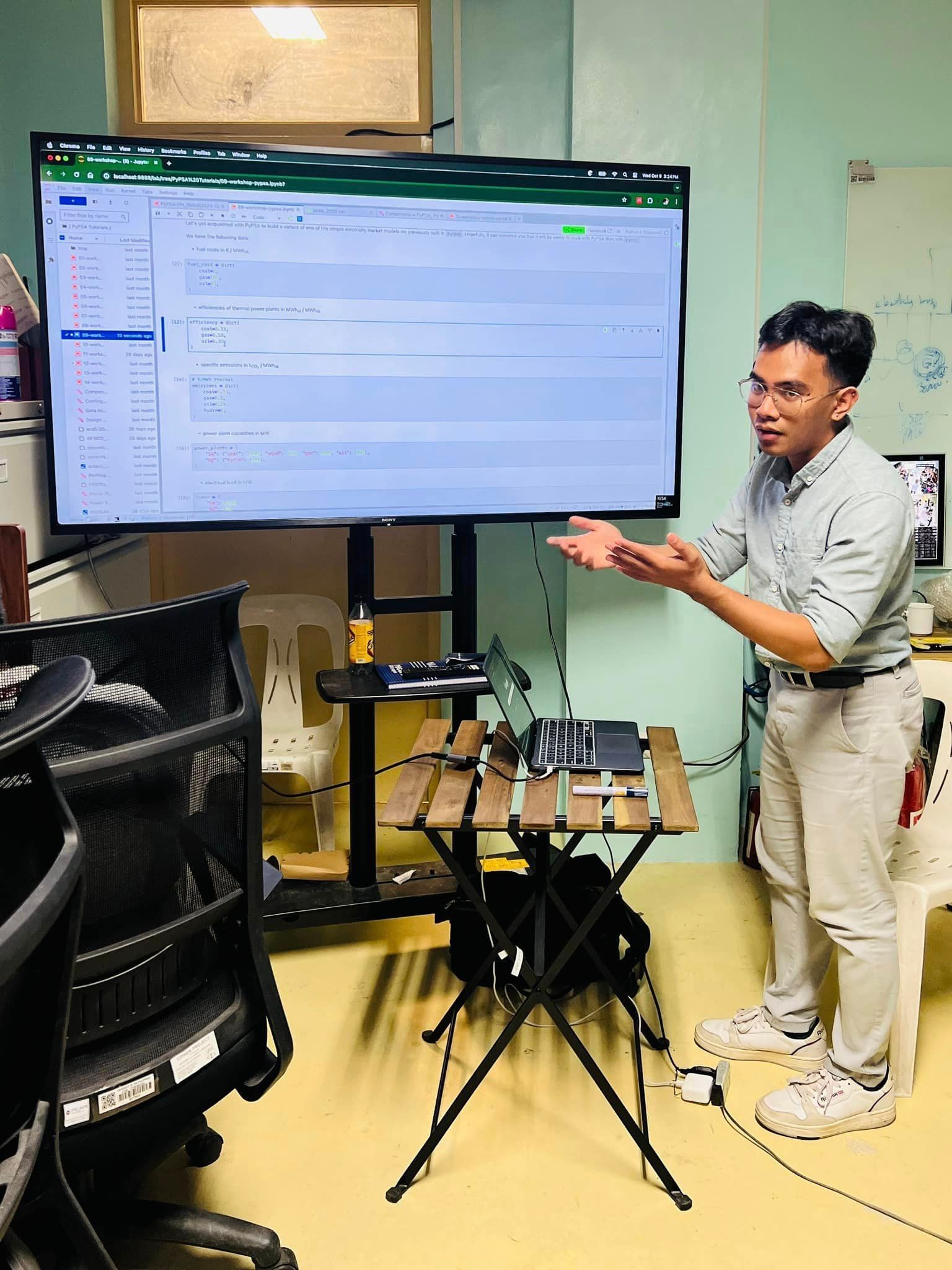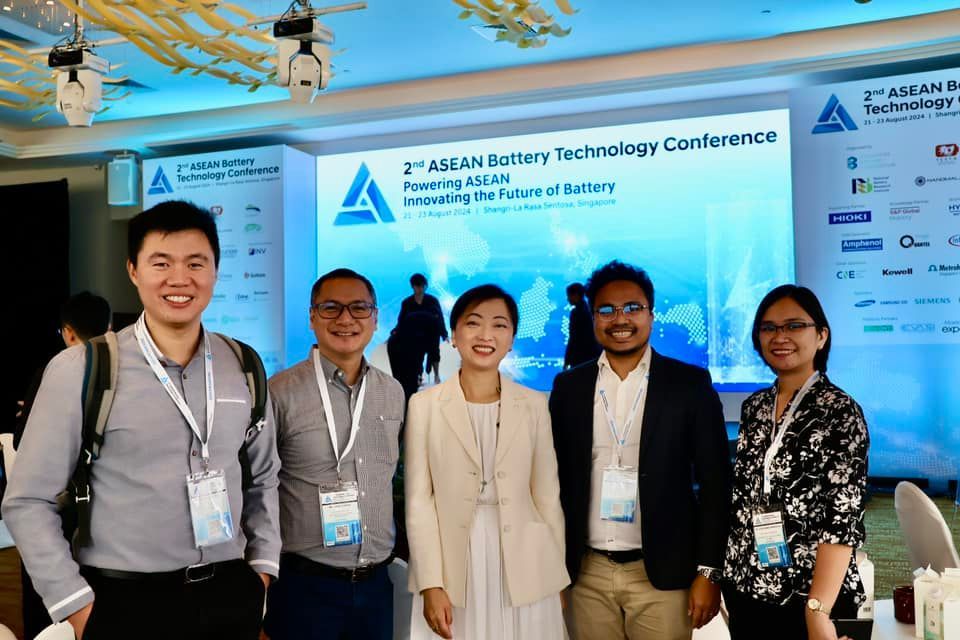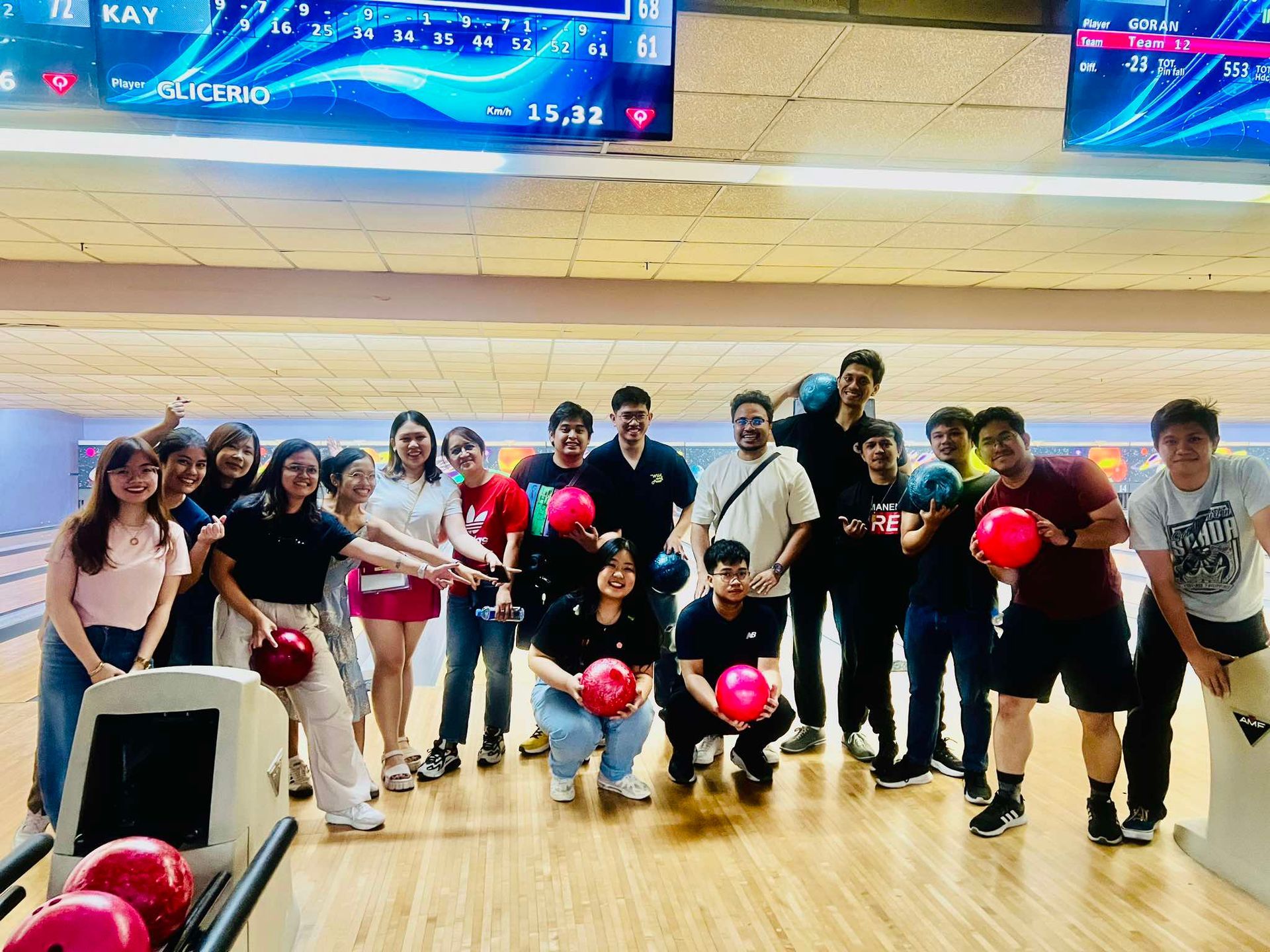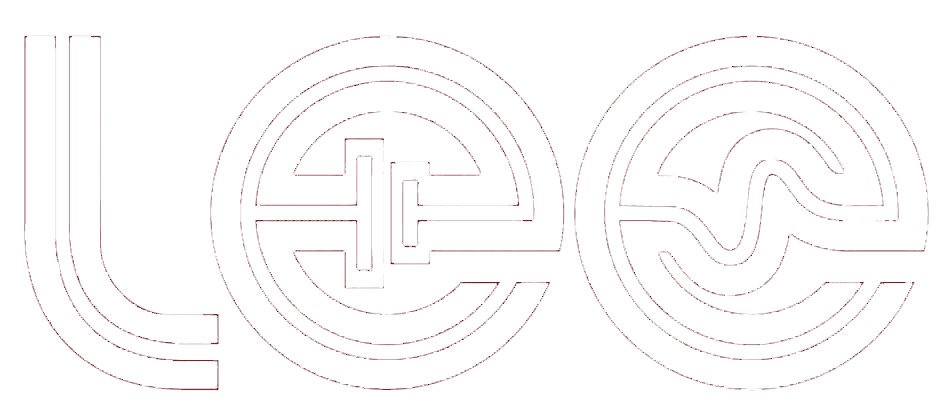Dr. Allan Padama gives a lecture on Density Functional Theory calculations of gas-surface interactions
In the first Distinguished Speaker Seminar of the second semester of AY 2019-2020, Dr. Allan B. Padama of the University of the Philippines at Los Baños gave a lecture on Density Functional Theory (DFT). He explained the fundamentals of DFT and then discussed key findings of a few of his recent publications on gas-surface interactions investigated using DFT calculations.
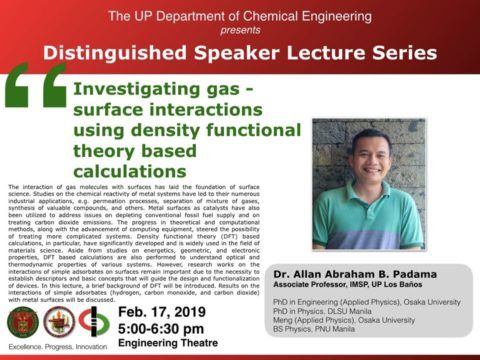
Prof. Padama started the lecture with an outline of DFT. He began with a review of the Schrodinger equation and explained that if solved you could know all properties (electronic, magnetic, etc.) of a system. He explained that the many-body Schrodinger equation is impossible to solve for large systems since the many-body electronic wavefunction is a function of 3N variables. DFT simplifies the problem by making use of electronic density which is a function of x, y, and z. Afterwards, he briefly discussed the two Hohenberg-Kohn theorems. The first theorem states that the external potential of a system is a unique functional of electron density and the second theorem states that the ground state energy of a system is the global minima of the energy functional which is determined from the ground state density. Finally, he wrapped things up by explaining the research applications of DFT.
After a brief overview of DFT, Prof. Padama went on to elaborate important results from some of his DFT publications. In 2017 [1] , Prof. Padama, Prof. Ocon, and coworkers investigated the effect of CO, COH, and HCO adsorbates on the arrangement of Pd atoms in PdCu(111), a well-known catalyst for hydrocarbon formation as well as membrane for hydrogen permeation and purification. They discovered that the most energetically favored PdCu surface has non-aggregated Pd atoms with the majority of these atoms in the topmost layer. However, in the presence of adsorbates, the Pd atoms in the surface and subsurface regions tend to aggregate; the adsorption of CO and HCO depends on the coordination of Pd atoms in the topmost layer while the COH favors adsorption on the fcc hollow site. In a more recent publication [2] , Prof. Padama, Prof. Ocon, and coworkers studied the interactions of CO, O, and CO2 on Cu(111) and Cu3/Cu(111) surfaces. They discovered that the adsorption of CO and O is more energetically favorable on the cluster region of Cu3/Cu(111) than on its terrace region or on the Cu(111) surface, and thus Cu clusters could be potentially be used as catalysts in CO2 hydrogenation and in reverse water-gas shift reaction.
Dr. Allan Padama’s talk gave our department valuable insight into the world of quantum mechanics and DFT. The use of DFT to gain theoretical insight from experimental results is a powerful tool which can vastly improve the quality of a publication.
References
[1] Padama, A. A. B., Cristobal, A. P. S., Ocon, J. D., Diño, W. A., & Kasai, H. (2017). Effects of Adsorbates (CO, COH, and HCO) on the Arrangement of Pd Atoms in PdCu(111). The Journal of Physical Chemistry C, 121(33), 17818–17826. doi: 10.1021/acs.jpcc.7b02794
[2] Padama, A. A. B., Ocon, J. D., Nakanishi, H., & Kasai, H. (2019). Interaction of CO, O, and CO2 with Cu cluster supported on Cu(111): a density functional theory study. Journal of Physics: Condensed Matter, 31(41), 415201. doi: 10.1088/1361-648x/ab2b66
